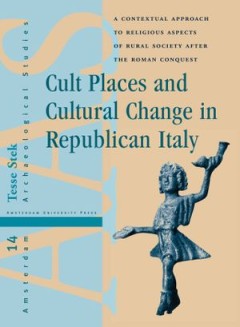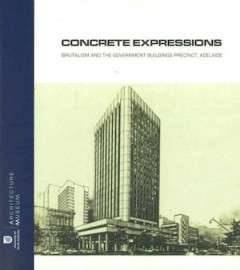Filter by

Dynamics of Coupled Structures, Volume 4 : Proceedings of the 33rd IMAC, A Co…
Dynamics of Coupled Structures, Volume 4. Proceedings of the 33rd IMAC, A Conference and Exposition on Balancing Simulation and Testing, 2015, the fourth volume of ten from the Conference brings together contributions to this important area of research and engineering. The collection presents early findings and case studies on fundamental and applied aspects of Structural Dynamics, including pa…
- Edition
- -
- ISBN/ISSN
- 9783319152097
- Collation
- 173 pages
- Series Title
- -
- Call Number
- 690

Cult Places and Cultural Change in Republican Italy
This scholarly study throws a new light on the Roman impact on religious structures in Republican Italy. In the last four centuries BC, Italy went through immense changes. The Apennine and Adriatic areas were originally inhabited by various 'Italic' tribes and characterised by a specific non-urban societal organisation, in which cult places had a pivotal function. From the fourth century BC onw…
- Edition
- -
- ISBN/ISSN
- 9789089641779
- Collation
- -
- Series Title
- -
- Call Number
- -

Sherborne Old Castle, Dorset Archaeological investigations 1930–90
Sherborne Old Castle was built in Dorset in about 1122–35. The fortified palace was one of several major building projects undertaken by Roger, Bishop of Salisbury. Although Sherborne Old Castle was altered over the next four centuries, most of its original structural elements were retained until the buildings were slighted during the English Civil War. This report describes and analyses the …
- Edition
- -
- ISBN/ISSN
- 9780854312993
- Collation
- -
- Series Title
- -
- Call Number
- -

Glastonbury Abbey Archaeological investigations 1904–79
This is a comprehensive study of the archaeological archives and artefact collections of Glastonbury Abbey, together with a new geophysical survey of the site. It analyses thirty-six seasons of archaeological excavation directed by such iconic figures as Sir William St John Hope, Sir Charles Peers, Sir Alfred Clapham and Dr Courtenay Arthur Ralegh Radford, and reveals new insights into the abbe…
- Edition
- -
- ISBN/ISSN
- 9780854313006
- Collation
- -
- Series Title
- -
- Call Number
- -

Building on experience - Learning from the past to plan for the future
The LIBER Architecture Group reflects on experience of European library building projects from the past twenty years in order to plan the next generation of library buildings. This documentation of recent library building projects accompanies the 14th Seminar of the LIBER Architecture Group, taking place in Budapest and Debrecen (Hungary) 8–12 of April 2008. Most described projects refer to s…
- Edition
- -
- ISBN/ISSN
- 9783940344267
- Collation
- -
- Series Title
- -
- Call Number
- 729 SUD b

Lectures on Innovation in Building Technology: Lecture Articles for Students …
This book is a collection of articles written in recent years and used in lectures for students at the Faculty of Architecture at Delft and at Nottingham University. The lectures and articles are based on a mixture of innovations in academia and industry. They elucidate the relationship between architecture and building technology, as well as high technology, transfer of technology, innovative …
- Edition
- -
- ISBN/ISSN
- -
- Collation
- -
- Series Title
- -
- Call Number
- -

Concrete Expressions:Brutalism and the Government Buildings Precinct, Adelaide
This monograph focusses on a cohesive group of four government buildings constructed in Adelaide during the 1970s. Designed by different architects, the buildings all feature monolithic, austere forms and broadly similar external concrete finishes, and are often described by casual observers as being Brutalist in style. But are any or all of them truly Brutalist?
- Edition
- -
- ISBN/ISSN
- 9780987120045
- Collation
- -
- Series Title
- -
- Call Number
- 720
 Computer Science, Information & General Works
Computer Science, Information & General Works  Philosophy & Psychology
Philosophy & Psychology  Religion
Religion  Social Sciences
Social Sciences  Language
Language  Pure Science
Pure Science  Applied Sciences
Applied Sciences  Art & Recreation
Art & Recreation  Literature
Literature  History & Geography
History & Geography